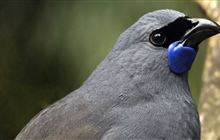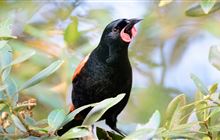Native bird numbers double after long-term predator control
Archived content: This media release was accurate on the date of publication.
Introduction
Birds are flourishing in South Westland’s Landsborough valley thanks to 20 years of sustained predator control.Date: 28 May 2018 Source: Office of the Minister of Conservation
Birds are flourishing in South Westland’s Landsborough valley thanks to 20 years of sustained predator control, says Conservation Minister Eugenie Sage.
“The results of Department of Conservation (DOC) monitoring show the results we can get by taking a long-term and sustained approach to predator control,” Eugenie Sage said.
“The $181.6 million over four years of new funding in Budget 2018 will enable DOC to do more of this work and achieve great results for our birds.”
DOC monitoring in Landsborough Valley found numbers of mohua (yellowhead), tuī (parson brid), korimako (bellbird), pīpipi (brown creeper), tītitipounamu (rifleman), riroriro (grey warbler) and kākāriki (yellow-crowned parakeet) have all steadily increased over the last 20 years in response to a sustained programme to suppress rats, stoats and possums.
Other species—kākā (bush parrot), pīwakawaka (fantail), ngirungiru (tomtit) and kereru (wood pigeon)—have stayed stable.
“Two decades of bird monitoring in the Landsborough valley shows that with persistent trapping and aerial 1080 treatment, our birdlife can recover,” said Eugenie Sage.
“Mohua is one of the most threatened birds there and has increased 24-fold over the time of the study—going from 14 to 338 birds in the monitoring area.”
“These results highlight that where we control pests over whole valleys and forests, we can turn around the fortunes of our native birds and help address our biodiversity crisis where 82 per cent of our birds are threatened or at risk of extinction.”
The additional $81.3 million in Budget 2018 dedicated to predator control will result in 1.85 million ha—and an area larger than Northland and Auckland combined—where predators are kept low on an on-going basis.
“The investment reflects New Zealand’s longstanding commitment to the international Convention on Biological Diversity, and our responsibility to protect the species and ecosystems found nowhere else in the world,” Eugenie Sage said.
The programme in the Landsborough is DOC’s longest study charting the response of birds to pest control and shows the value of science to inform conservation management.
It involves a team of bird experts doing 175 ‘five-minute bird counts’ each spring at fixed points in the valley, providing an index of relative bird numbers.
All native birds show increasing or stable population trends apart from two species— tautou (silvereye) and the migratory long-tailed cuckoo (koekoeā) —which have declined. Monitoring will continue at least until bird populations plateau.
Predator control began in the Landsborough valley in 1998 after the impact of predators on birdlife was observed. Since then DOC has done valley-wide trapping and six aerial-1080 operations timed with increasing rodent levels, with the most recent two, in 2014 and 2016, covering the entire valley.
Contact
For media enquiries contact:
Email: media@doc.govt.nz



